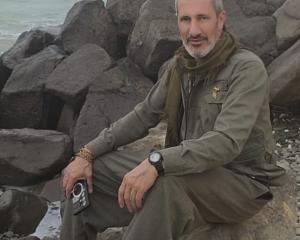
Rivers from South Canterbury to Waimakariri spewed massive amounts of turbid water, including forestry waste or refuse from dairy operations, into the marine environment after last week’s extreme rain, University of Otago Emeritus Prof Liz Slooten said.
And the sediment entering coastal waters would smother life in the Banks Peninsula Marine Mammal Sanctuary, Prof Slooten said.
She has studied threatened Hector’s dolphins there since 1984.
While the sediment would be unlikely to affect the dolphins directly, it would act on their food source, she said.
Offshore rocky reefs, often favoured by fishermen due to their productivity, would be hard hit.
Seaweed beds would be smothered.
And the sediment suspended in the water would block sunlight and stop photosynthesis from occurring.
The total amount of organisms in the area, its "biomass", would recover within a matter of years, she said.
But the ecosystem would not recover evenly, Prof Slooten said.
Its complexity would take a much longer time to return.
"You will get a recovery of biomass reasonably quickly, probably within a year or two, but the diversity will take a long time to recover," she said.
"If you want to take it right back to normal, it can take ages."
Department of Conservation (Doc) marine ecosystems technical adviser Helen Kettles said the flood’s impact on the coast could have far-reaching ecosystem effects.
Sediment could prevent some seabirds, such as penguins, shags and terns, from pursuing fish underwater.
It could limit their ability to find food, which was especially important during their breeding season, she said.
It could also smother valuable coastal species like cockles and seagrass.
Seagrasses, among other habitats, were nursery grounds for some popular fisheries, she said.
Doc was eager to build on what was already known about how sediments affect the coastal marine environment and make information more available for management, she said.
Environment Canterbury natural hazards principal science adviser Justin Cope said river floods produced large amounts of sediment of a wide range of sizes.
Material from fine silt to large dinner-plate sized rocks would enter the coastal marine environment.
The amount was difficult to quantify.
And the council did not measure sedimentation in coastal waters, he said.
Very fine sediment that reached the coast could deposit on the shoreline and the plant and animal species that lived there.
It would also be carried out to sea where it would eventually settle on the seabed.
Coarser sands and muds could deposit in the estuaries, bays, and harbours as well as across river mouth lagoon beds, which could cause temporary smothering of the gravel bed, and other habitats.
Where there were sufficient freshwater flows, and wave or tidal energy, the deposited sediment would likely be resuspended and shifted to low-energy areas to accumulate, Mr Cope said.
Conservationists have called on regional councils to take note, and to recognise what people do on the land will affect the marine environment.
Last month, as the Otago Regional Council prepared its long-term plan, Otago Conservation Board chairwoman Tara Druce urged the council to recognise that sedimentation was having a major impact on the marine environment, not only on habitat-providing species such as Macrocystis (kelp) but on top predators.
"Coastal waters are important to our region’s identity but are also critical to our region’s biodiversity and are heavily impacted by what we do on the land," she said.












